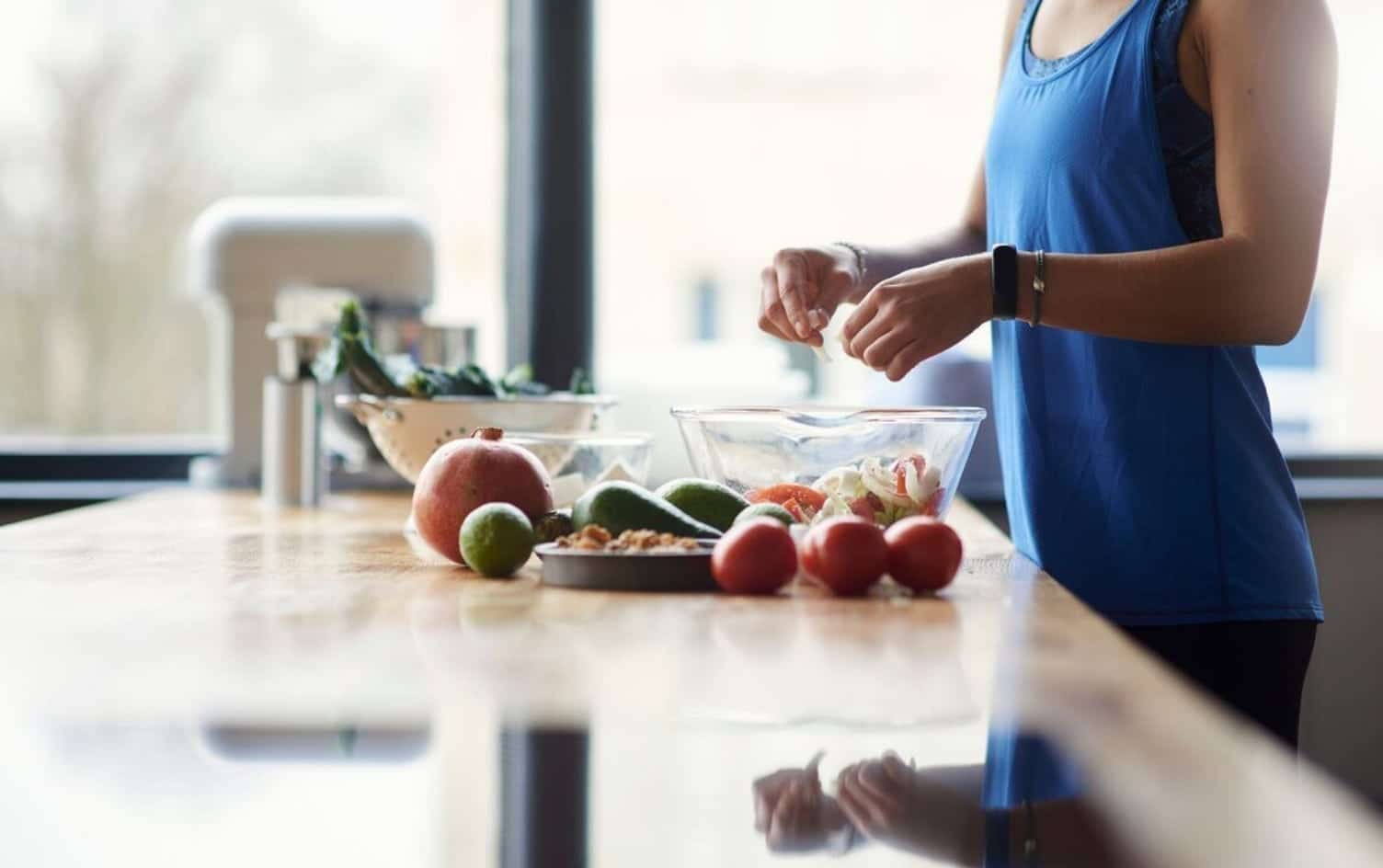When it comes to weight-loss nutrition, figuring out what to eat (and how much of it) is half the battle. The other half is minimizing temptation and guesswork to give yourself a leg up. In fact, most people on a weight-loss journey don’t realize that by investing in the right tools and implementing subtle organizational hacks, they can actually put themselves in a great position for meeting their goals. And where better to start than the center of food in your home: the kitchen.
Here’s what nutrition pros recommend to optimize your cooking space to prioritize shedding pounds:
Simply putting weight-loss friendly foods in your line of sight can make you more likely to reach for them. “Keep nutrient-rich foods like fruits, veggies, string cheese and yogurt at the front of your refrigerator so they are easiest to grab,” suggests Amy Goodson, a registered dietitian. The reasoning behind this is simple: “Often you will choose what you see first, so if the healthiest choice is up front, it is more likely you will choose it.”
For many people, portion control is a huge part of nailing the weight-loss equation, but it can be tough to put into practice, especially when you’re pressed for time. “Measuring out portions with measuring cups may even be too many steps,” says Monica Auslander Moreno, a registered dietitian. “You can buy plates, bowls and cups now with delineated serving sizes. It’s a rather eye-opening experience to realize you’re having five servings of your sweet potato puree at once. Even wholesome foods can be overportioned and lead to weight gain. Of note, there are wine glasses with these little etchings as well, which is a nice way to not overpour.”
Rather than drizzling food with oil straight from the bottle, use an oil mister for sauteing vegetables, cooking eggs and dressing salads, suggests Deborah Malkoff-Cohen, a registered dietitian. “A tablespoon of oil is 120 calories,” she adds. This is especially effective if you’re trying to reduce your fat intake. A mister you fill yourself is also a healthier option than pre-packaged oil sprays, Malkoff-Cohen notes, since they often contain additional ingredients like nonstick and anti-foaming agents as well as preservatives. Be sure to read the directions to find out how many sprays your mister uses per teaspoon or tablespoon, as each one is slightly different.
“Have a good collection of spices on hand,” recommends Haley Hughes, a registered dietitian. “It’s a great way to change up flavors without the added calories. Sometimes sauces and toppings can add up quick.” And if you’re getting bored with your go-to wholesome meals? “Some new herbs and spices may be just the fix.”
“Keep only one type of unhealthy snack food at a time,” suggests Lisa Young, PhD, a registered dietitian. The more variety we have on hand, the more we eat, she explains. By simply limiting your options, you’re more likely to avoid overeating.
This is especially true for healthy but highly caloric foods. “It makes you more likely to grab the food, eat the food and train your brain to understand what a ‘portion’ looks like,” Moreno says. “This is especially important with energy-dense items like nuts, nut butters, guacamole and hummus. It’s too easy to polish off that whole container of hummus in a sitting — and that could be something like six servings! All of these items now come in single-serve packets, and while I recognize the increased waste associated, I’d rather it be a temporary solution to guide clients’ eyes into appropriate portioning in hopes of future bulk buying/self-preparing.”
If you can’t find your favorite snack foods in single portions, DIY them. “Many people will start snacking out of the bag, box or jar and eat way too much,” Goodson points out. “When you get home from the grocery store, take a few minutes to ‘snack baggie’ these types of foods by serving size, that way the decision is made for you when you are hungry. A portion-controlled serving is ready to go!”
“Family-style eating can be tempting,” Goodson points out. “If you can reach for another spoon of this, scoop of that or piece of something, it is easier to overeat. Try leaving the food in the kitchen so you have to be more aware of getting second helpings. Having to leave the table will at least make you think twice.”
If you can’t find time to prep healthy snacks or meals, try combining it with your nightly TV habit. “Cut vegetables during commercials if you watch TV shows in real time to have for the next few days and keep accessible in the refrigerator as snacks,” Malkoff-Cohen suggests.
“I often encourage clients to post sticky notes including their goals, healthy eating guidelines or whatever motivation visuals they can think of in the kitchen,” Hughes says. “Many of my clients struggle with stress or boredom eating so having those reminders can sometimes help them take a minute to stop and think about why they are eating.” Of course, if you’re truly hungry, go for it, but a quick reminder to yourself can help stop mindless eating in its tracks.





One Response
Thanks Julia! Amazing tips to manage kitchen to achieve your weight loss goal. It has been seen that many people start following weight loss plans but they fail to arrange their foods according to the weight loss strategy. So making a perfect diet or food plan is much important to get success in your weight lose goal.